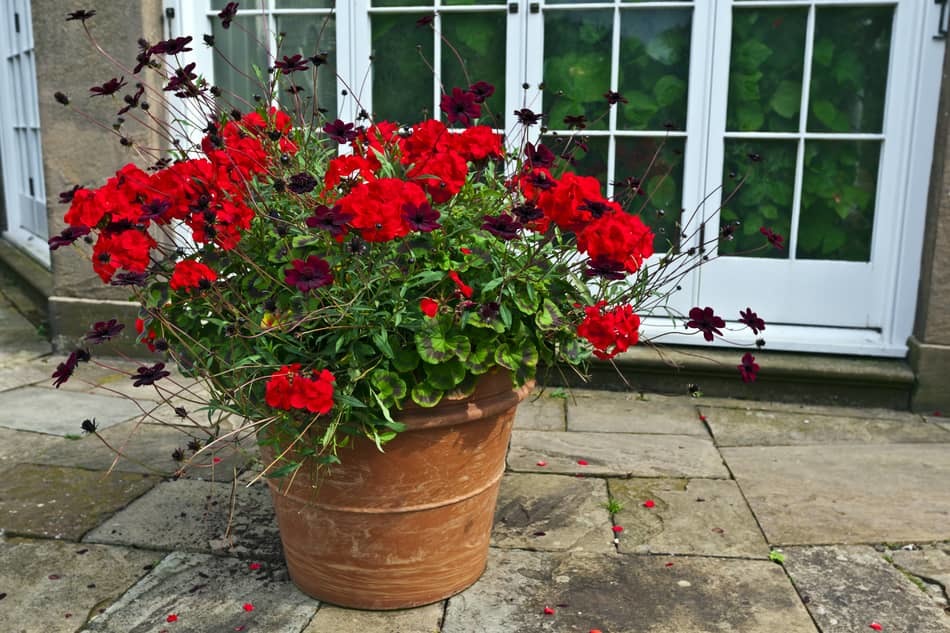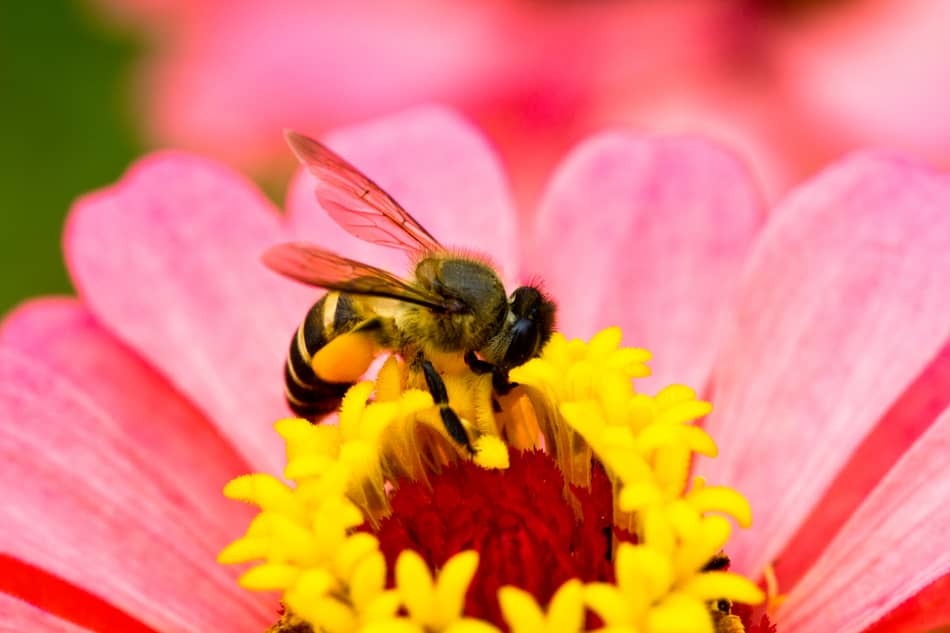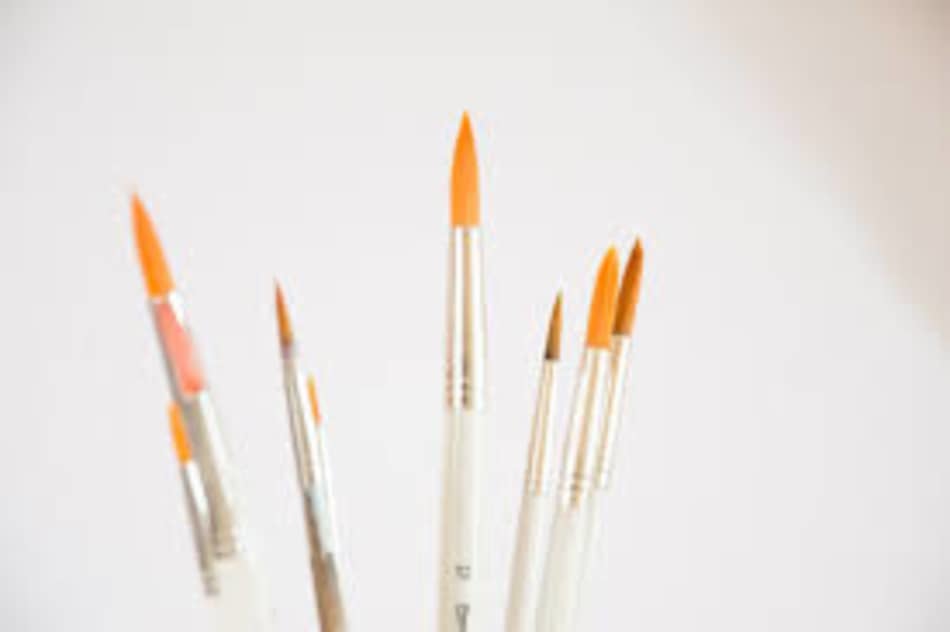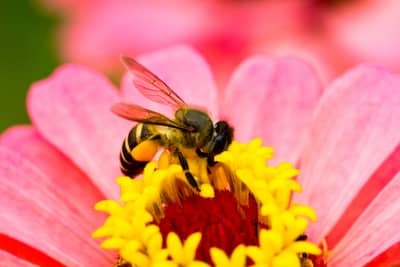When you’re buying a nice assortment of plants to grow indoors, you’ll need to know how to pollinate them. Having a collection of indoor plants myself, and through extensive research done on this topic, I’ll take you through what I’ve learned so you can make your plants flourish indoors too.
The best way to pollinate indoor plants is to mimic nature: You can use bees (by opening a nearby window) or hand-pollinate with a small watercolor paintbrush. However, keep in mind that many plants are self-fertile; meaning they don’t require pollination by any other means.
For more general info on growing indoors, check out our definitive guide to indoor greenhouses.

What is Pollination?
In short: Pollination is the most common method of reproduction in plants – as there are male plants and female plants. Essentially, this involves the transfer of pollen from one plant to another to allow fertilization. Much like when the sperm meets the egg. However, contrary to that, there happen to be plants that self-pollinate.
What is Self-Pollination?
Self-pollination means that the plant contains both male and female reproductive parts, so it can pollinate itself. In other words, self-pollinating plants do NOT need pollinators like bees or other insects to pollinate their flowers.
So, pollen accumulates on the male anthers; anthers are a crucial part in the reproduction of flowering plants, because it is what produces pollen. In order for successful fertilization, the grains of pollen must adhere to the female stigma.
The stigma is the part of the pistil where the pollen germinates – in other words the seed buds after being planted in the soil after remaining dormant for a set length of time.
I understand I probably overloaded you with all of this information on plant anatomy, but it’s pretty fascinating though! Especially when it comes to the fact that plants can self-pollinate all on their own! In fact…
What Plants Self-Pollinate?
Common plants that self-pollinate are:
- beans,
- peas,
- lettuce,
- tomatoes,
- peppers and
- eggplants.
Their seeds are easy to obtain, because their flowers are hermaphroditic, containing both sets of male and female reproductive organs.
Plants of the same species should be placed a good distance apart only if there are many pollinating insects, but not much nectar or pollen nearby.
Some self-pollinating plants need a little help
When it comes to plants that require help pollinating indoors, some need a little more attention:
- peppers,
- tomatoes, and
- eggplants.
However, there are a few plants like peas, beans, and lettuce that do NOT require any help pollinating indoors.
While it’s nice that some plants are very low-maintenance when it comes to receiving assistance, if any at all.
So what do you do if pollination is needed?
When Pollination in Necessary
Pollination becomes necessary for a number of reasons–usually to ensure that fruit sets, like tomatoes, peppers, melons, etc. Furthermore, pollination helps produce seeds that you can use for growing more plants.
When pollination is not needed
However, pollination is unnecessary when it comes to:
- growing greens,
- root vegetables, or
- ornamental plants.
That’s because, for those plants, you aren’t concerned with growing fruit or producing seeds–you care about the green leaves or roots, neither of which involves the flower.
For example, if you’re growing garlic, you can dive into the guide for growing garlic indoors–no pollination required.
How Pollination Occurs in Nature
I love bees. They’re like tiny flying robots, seeking out flowers, collecting pollen & nectar, then making honey.
So bees are the most conspicuous pollinator.
But what does that mean? What do bees do to pollinate plants?
Plants depend on bees to collect the nectar and pollen from the flower of the plant. In doing so, the pollen from the stamens stick to the hairs of the bee’s body. Then, when the bee visits the next flower to retrieve more nectar, the pollen that’s stuck to the bee’s body rubs off against the stigma, or the very tip of the pistil. Transferring pollen from one flower to another is how flowers get fertilized, which allows fruits (and the seeds inside the fruits) to grow.
Another way that pollination occurs is by other animals. Animals that carry pollen in their hair may be vertebrates like birds, bats, monkeys, deer, rabbits, and other animals. For fellow nerds, the technical term for animal pollination is zoophily, meaning, the transfer of pollen by animals.
A couple other ways that plants get pollinated is by wind and water.
The most common plants that get pollinated by wind are:
- many cereal crops like corn, wheat, & rice;
- walnuts, pecans, & pistachios;
- pine & fir trees;
- and, of course, ragweed.
So, next time you’re eating those yummy walnut crescent Christmas cookies, remember: wind pollinated the wheat, walnuts, & pine tree that made it all possible.
Water-pollinated plants aren’t as common, and they’re typically aquatic plants, like pondweed.

Using bees for pollination
So, knowing what pollination is, how it happens outdoors in nature, and what plants require it, you can use that knowledge to get nature to work in your favor.
Bees leave their hive on an average of 1,000 times a day and can travel from flower to flower at least 10 flowers every minute. With that kind of work ethic, imagine the possibilities! There’s a simple way of putting bees to work: the most obvious is beekeeping.
Note that you do NOT need to have a hive of honeybees. Bumblebees are often used in greenhouses and high tunnels. And, bumblebees actually visit more flowers than honeybees, making them more efficient pollinators.
Beekeeping starts with having the necessities:
- a source of water nearby,
- outdoor temperatures between 57F – 100F,
- protection from strong winds, and
- a south- or southeast-facing hive location.
To be able to manipulate a bee’s behavior, it helps to understand how they work.
If you’re in a hilly area, put your hive in a valley. Bees will fly uphill for nectar, and come back down loaded with nectar and pollen.
Most importantly, you want the bees close by and away from nuisances.
To Encourage Bees to Build a Comb
Honeybees are amazing at what they do, while at sometimes they can be really quick at building a comb, there are other times where it feels like almost an eternity.
It all comes down to whether or not the bees feel they need a comb and have a healthy population of young bees to make it happen.
When it comes to building a comb with our team of young bees, there are 3 major factors to consider for comb building.
- First: bees will only build a comb when they need it. Honeybees like to increase their population in order to form a swarm. When they achieve this, they can finally get to work on producing enough honey to last the winter. The larger the population is, the more honey they will produce and at a faster rate.
- Second: The brood nest needs to have a warm air temperature. Bees eat their honey and create heat within their brood nest to survive the harsh winter.
- Third: Honeybees need an abundant source of nectar in order for them to stimulate the wax glands. In bees, fat cell metabolize honey to produce wax. Consuming pollen within the first few days of a bee’s life encourages more fat cell development to produce more wax.
If those 3 conditions aren’t met, bees won’t typically build a comb.
How to attract bees to a garden if you don’t want a hive
OK, so maybe you don’t want or need a full-on beehive. That’ s OK–there are other ways to attract bees to your garden, whether it’s indoor or outdoor.
And why do we want the bees? To produce more fruits & vegetables (yes, a cucumber is actually a fruit), or seeds.
Now, think about what bees–not just honeybees–want: nectar & pollen, right?
Yes, but bees also need a couple other things to create an ideal, attractive place for them.
Bees need shade
The first thing you will want to do is provide them cover from the sun. Like humans and other animals, bees need a break from the heat.
For indoor plants, you can simply place the plants next to a window, and open the window. Depending on the type of plant, you might need to keep it out of direct sunlight. Coleus plants are pretty hardy, and provide shade for bees; you can put a few coleus next to your other plants.
Bees need water
The next thing to do is to give them a source of hydration. Bees get thirsty too!
To give bees a source of water, you can keep a small fountain running–ideally with a small surface–like stones or pebbles–for bees to sit & drink without getting wet or drowning. For indoors, you can use a couple of small bowls of shallow water.
Bees prefer a variety of flowers
Another thing to consider when choosing plants for your garden: bees like a variety of flowers. That’s because each type of flower blooms at different times. So, a variety of different kinds of flowers means that there’s a constant source of nectar & pollen for bees.
Bee balm, sunflowers, and other prolific flowering plants–in addition to the fruits & veggies you’re already growing–will make your garden a magnet for bees.
Bee kind
OK, so maybe having bees close by kinda freaks you out.
I get it. When I was 5 years old, I got stung by what seemed like a golfball-sized bumblebee. It was traumatic! I literally ran all the way home, screaming for help.
Even so, bees are essential to your growing plants. So, don’t kill or antagonize them. And avoid pesticides–if you have bug problems (like aphids), unleash an army of ladybugs instead of dousing with chemicals that’ll scare off the bees.
Pros and cons of using bees for pollination
Having nature do the work obviously has its positives:
- Your garden continuously growing and being nurtured by nature and all of its little insects and resources.
- Fresh fruits and vegetables and seeds which will sprout more delicious food.
- Lovely colors that spruce up the indoors and smell wonderful.
However, using bees to pollinate indoor plants has its downsides:
- Bees can get trapped indoors.
- Keeping windows open also lets in flies, rain, & potentially other critters.
- If you’ve got pets, they might attack the bees.
- Your kids might get stung.
How to pollinate indoor plants: human-assisted pollination
So, it’s not always feasible or convenient to just open a window & let the bees do their thing.
There are 4 main ways to pollinate fully-indoor growing operations–whether it’s a hobby greenhouse, or a full-on 20-acre commercial greenhouse:
- bumblebees: bumblebee hives are commonly used in greenhouses
- hand pollination: just like it sounds, this is very labor intensive
- electric pollinators: typically a vibrating wand
- leaf blowers: the wind produced can pollinate flowers, but can also damage plants
Bumblebee hives
OK, so we talked a bit about honeybees, which are mainly used for outdoor pollination. But bumblebees are a different animal–literally.
Bumblebees are actually 2-4 times more efficient pollinators than honeybees, since they work faster, and work up to 50% longer than honeybees. So, really, the cliche should be “busy as a bumblebee.”
The downsides though are that bumblebee colonies are more expensive and have many fewer bees than honeybee colonies. Even so, they can be a viable option for pollinating plants in a greenhouse.

Hand pollination
Not much to explain here. Hand pollination is what it sounds like: pollinating each flower by hand.
Sounds like a lot of work, but it can certainly put you in a zen state of mind. Just don’t try it with 3 acres of strawberries.
Usually, for hand pollination, the best tool is a soft watercolor brush, where the brush bristles won’t damage the flower.
Simply–gently–rub the brush bristles on the flower so you get the pollen grains onto the brush bristles, then repeat with each flower. The brush bristles will transfer the pollen grains between flowers, thus pollinating & fertilizing the plants.
Electric pollinators
Here, we get a bit more technical. Usually, electric pollinators consist of a wand-like tool that vibrates; touching it to the plant gently vibrates the plant, thus releasing the pollen.
Electric pollinator tools are more efficient than hand pollination, since you don’t have to pollinate each individual leaf. Instead, you simply touch each plant to vibrate it.
Leaf blowers as pollinators
Yeah, I know this sounds goofy & a bit ham-fisted, but it does indeed work, so long as you don’t go too crazy & damage your plants.
Especially for tomatoes & strawberries, using a leaf-blower can increase tomato yield by 55%–that’s an impressive result indeed. To achieve that yield, a leaf blower was used at low setting, and moving it back-and-forth about 2-3 feet from the plant (mostly on the flowers), for under 20 seconds at a time.
Sounds like it’s time to fire up the leaf blower!
Related Questions
Which vegetables are self-pollinating?
Vegetables that are self-pollinating include: tomatoes, peppers & chilies, eggplants, beans & other legumes (peas, green beans, lima beans), lettuces & spinach. Self-pollinating simply means the plant can pollinate (& thus fertilize) itself. So, it does NOT need other plants for fertilization.
Do I need to pollinate indoor tomatoes?
Pollinating indoor tomatoes is not necessary. However, you’ll get more tomatoes & bigger tomatoes by pollinating tomato flowers. Indoors, you can use a soft watercolor paintbrush, a vibrating toothbrush, or even a hairdrying (with the temperature on cool) to pollinate tomato plants.
Can you pollinate without bees?
Yes, you can indeed pollinate without bees. Outdoors, there are other pollinators: birds, butterflies, beetles, and even wind, though it depends on the plant. Indoors, hand pollination, vibration to release pollen, and forced air (e.g., from a hair dryer or leaf blower) can release pollen.
How to pollinate indoor pepper plants?
To pollinate indoor pepper (chili or chile) plants, gently shake the flowers to release their pollen. Pepper plants can pollinate themselves, but, like tomatoes, they do better with hand pollination, vibrating the plant, or a gust of air–like from a hair dryer or leaf blower.

